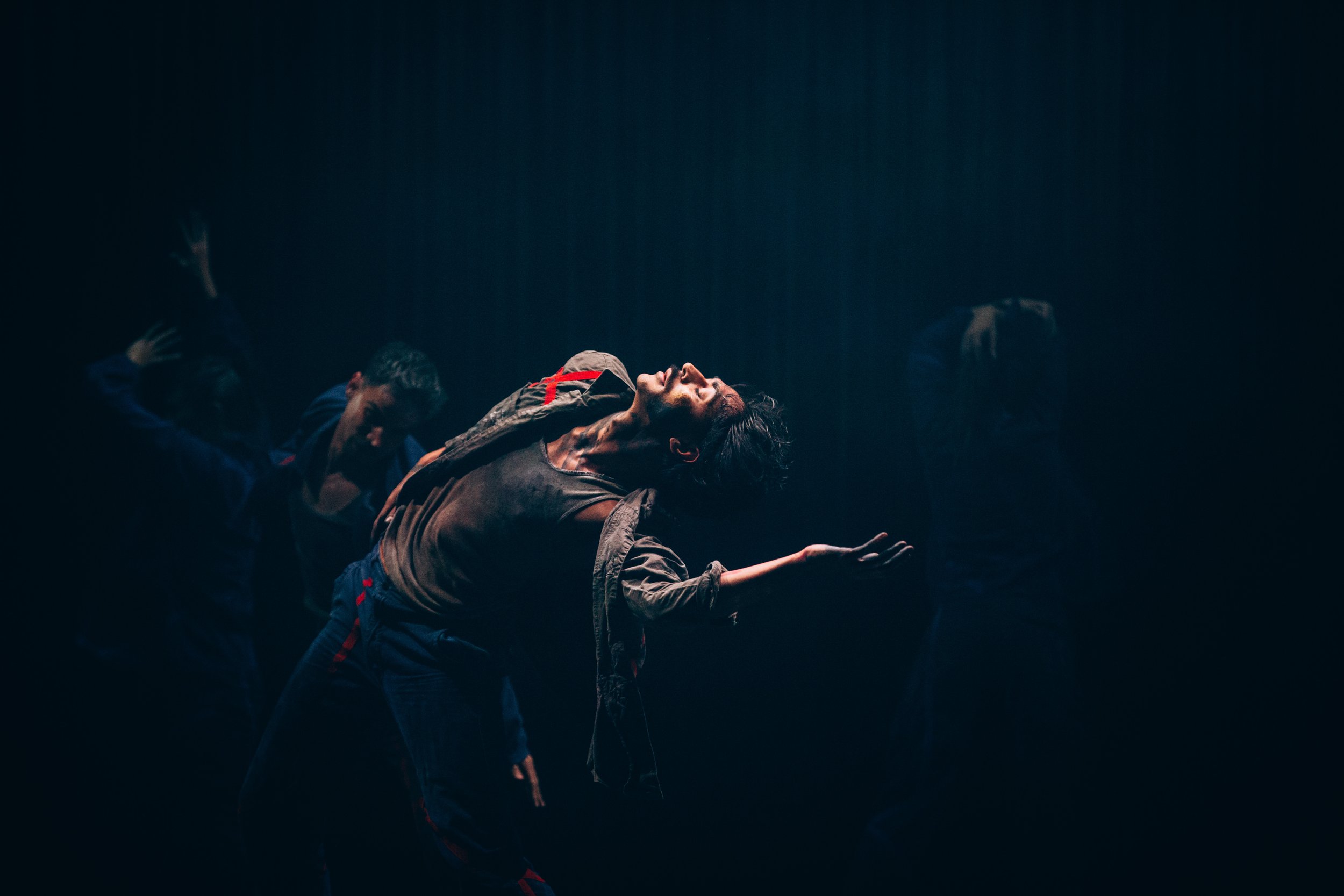Yuldea | Bangarra Dance Theatre
Image credit: Daniel Boud
Bangarra Dance Theatre , a beloved national company, has come to Brisbane to present Yuldea, the first piece wholly under the direction of Frances Rings, appointed in 2023. It is not however her first piece, having created nine works for Bangarra to date, including two in collaboration with previous Artistic Director Stephen Page. Although I was seeking to understand the difference between their styles, having seen many of their pieces over the years, its not as clear cut as one might think at first glance. So discarding my notions of before and after, I leaned in to watch a fine piece of contemporary dance.
Bangarra offers a unique style, a fusion of contemporary styles including dance theatre, that nonetheless retain the shapes and forms of traditional First Nations dance, whilst also wrapping in acrobatic styles courtesy of consultant Joshua Thomson of Legs on the Wall. this piece is performed by a huge ensemble of seventeen, and when they take to the stage for the first time, they are undoubtedly First Nations. It’s a powerful sight, not often seen in the theatre, this collective of proud blackfellas.
When the It took me a while to feel any real emotions. And this was my first clue as to what Rings wanted from me, from us. Nothing, nothing at all. You just watch. You bear witness.
The first few dances of Supernova and Kapi kept the same pace. Music from composer Leon Rodgers and gust composers Electric Fields kept many vibrant beats rumbling. Scenes out of history, scenes of water divination, of gathering, of life in the before-time, passed through in series of vignettes, a beautiful duet ‘Kapi Spirit’ with Lillian Banks and Kallum Goolagong highlighting the skill and artistry of the ensemble.
A violence descends on the stage in the third act, when a rough voiceover recites the Letters patent issued by King William IV that proclaimed the rights of ‘any Aboriginal natives’ or their descendants to lands they ‘now actually occupied or enjoyed’. Lies as it turned out, violence and lies. This scene seemed to evoke the influence of Thomson, with dancers strapped into strong elastics, allowing them to fling themselves at the audience as if they would hurtle off the stage. It is strange to me how dance can be didactic, and yet it was, with the endless rumbling voice over and the dramatic lighting and the violent contortions of the dancers.
Image credit: Daniel Boud
The third act was relentless with its four distinct dances each telling of a criminal horror. A feeling of dread, an acknowledgement of terrors. The Letters Patent, with its paternalistic lies. The Steel Snake through the building of which the soak was drained and the disruption of life made permanent, creatively represented with bending canes and curved tracks. The sickness of the mission life, with the dancer bodies made weak and listless. And the sparkling black mist, representing the atomic testing at Maralinga in 1956, with the body of Rikki Mason writhing in the black dust unable to rise.
Bangarra is an institution now. I feel it is both their blessing, and their burden, to tell the stories of First Nations people. It’s a coveted position, the luxury of respect, that will sell out seasons across the country. Hundreds, nay thousands will watch and take its lessons with it. But in many ways, they are bound to tell the stories of First Nations people. In the program notes, this is described as a great privilege by more than one cast and production member. But what do we do with it? What does it mean?
I am digesting it, wondering what was Rings’ aim, what was it she wanted me to feel. What was it she wanted the First Nations people in the audience to feel. What was the feeling sought for our many multi-cultured brethren and our tourists visitors seeking to learn more about our First Nations people.
Ultimately I felt it was an accounting. There is no want, no ask from the audience of many peoples, each with their own reason for coming to witness. There is just the accounting. The storytelling. The truth telling.
Image credit: Daniel Boud
Here is where we watched the stars. Here was good eating. Here we watch for water. Here in Yuldea, we saw the coming of the great steel serpent. Here we fell to thirst after the water went away. Here we burnt under the toxic fumes. The horrors of colonisation. Small horrors, and all-encompassing ones. The story of resilience. The story of survival. This is what happened, this is how it fell. Bear witness. This did not happen in the desert far away, in a time before now. This is happening now. This will always happen. This is a concurrent truth. You cannot undo it. You cannot make it right. But you cannot unsay it either.
The final scene, my favourite, with the dancers once more shrouded by the wires in the curtains, forever dancing just beyond our sight. Here is the brilliant songline writ across the sky. All these things are a part of it now. We bear witness, with our bodies, with our eyes, with our art. You cannot undo it, you cannot make it anew. It is and it will always be so. The crimes of the colony cannot be erased. Watch us. Learn the words. Remember. We do not forget.


